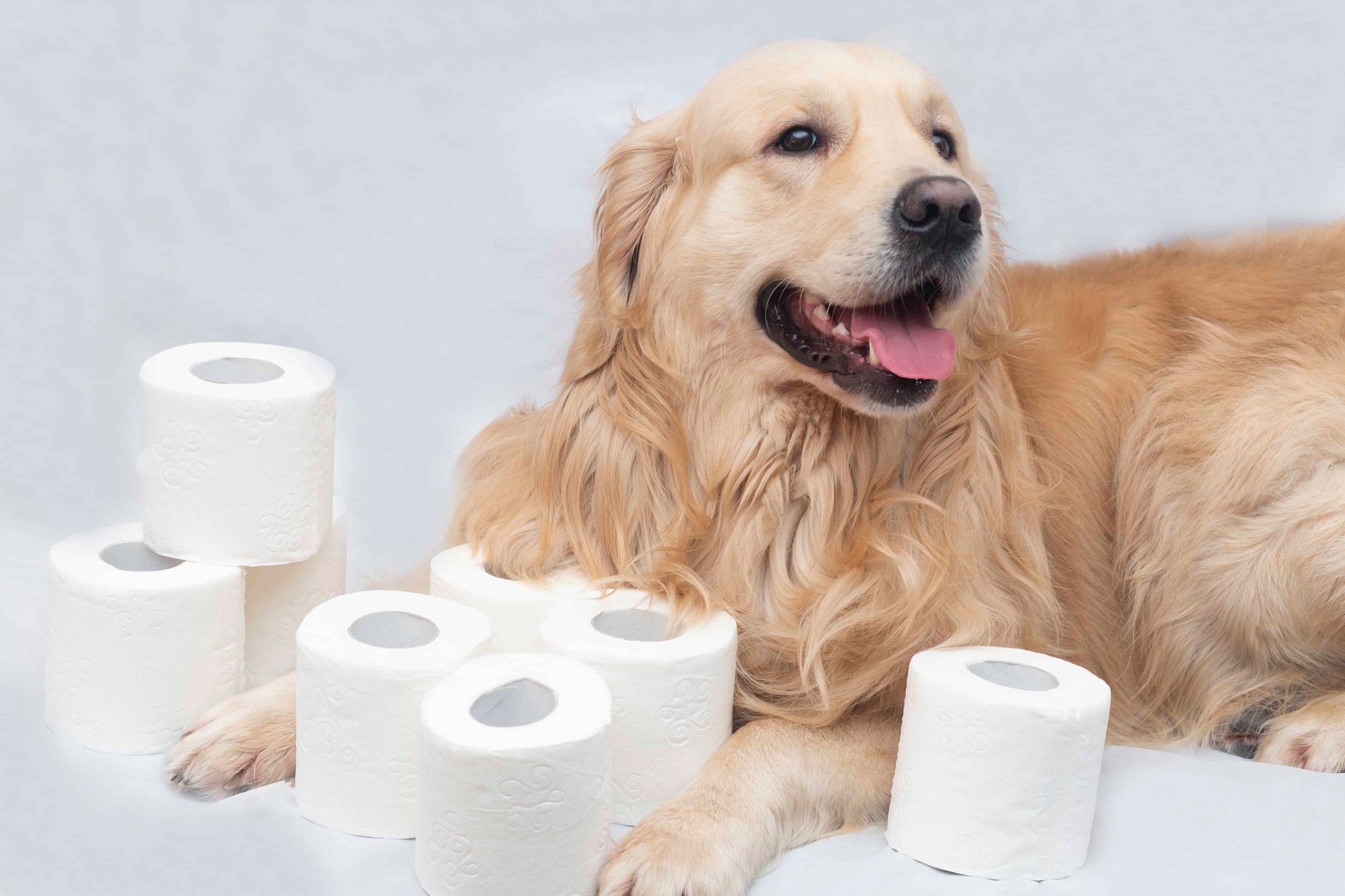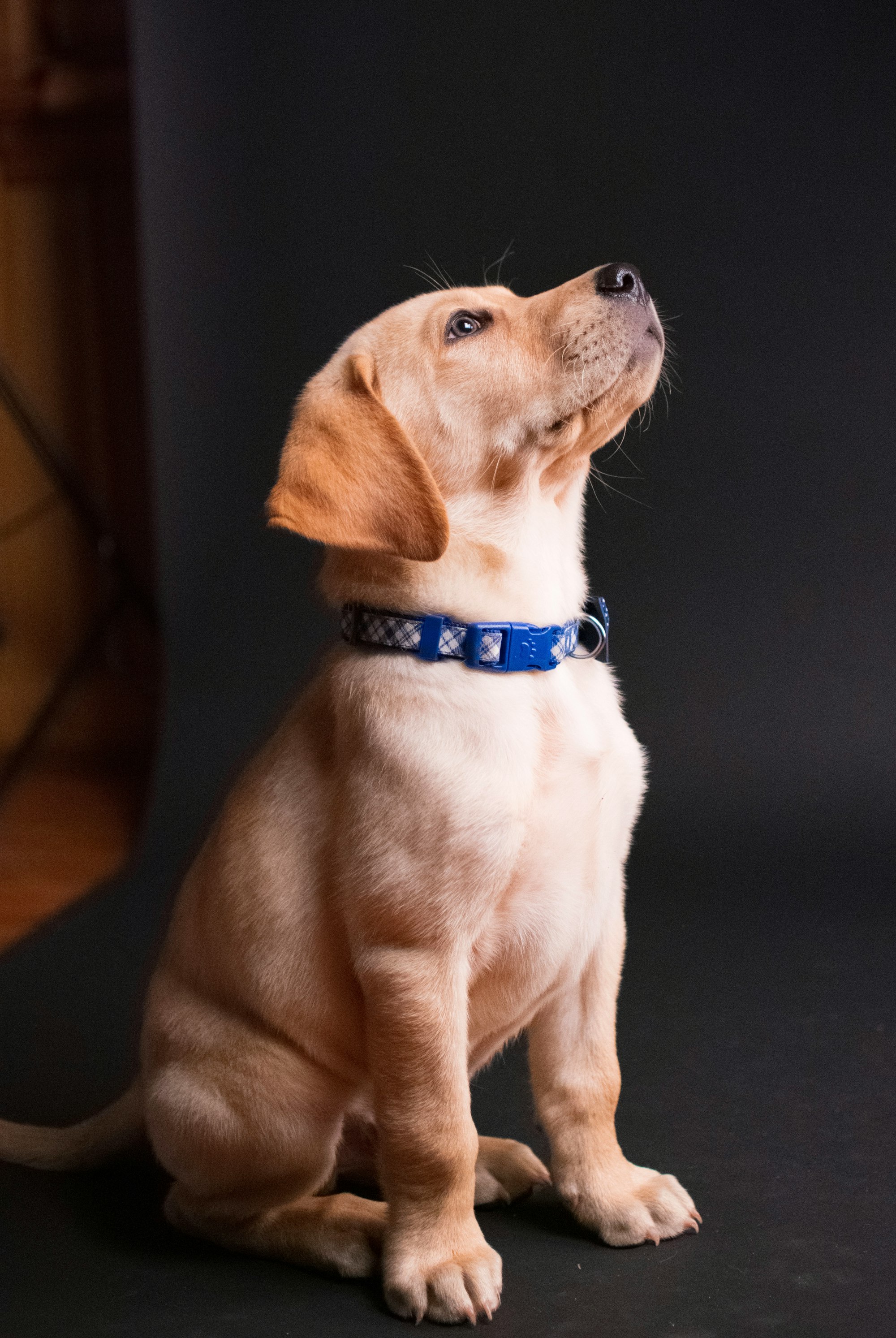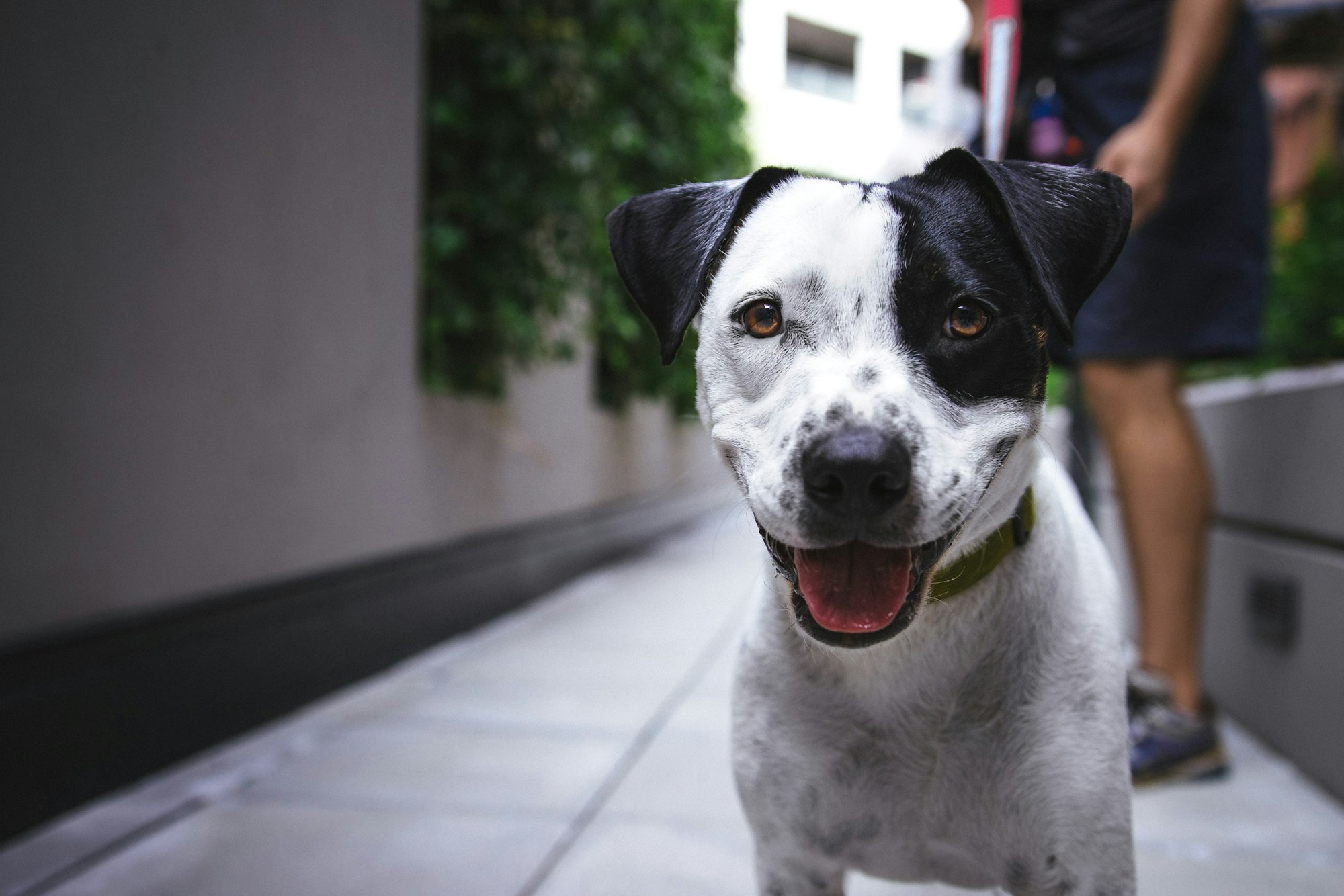Potty training is a vital aspect of dog ownership, regardless of whether you live in an apartment or a house with a yard. Teaching your dog appropriate bathroom behaviors not only ensures cleanliness and hygiene but also fosters a harmonious living environment for both you and your furry friend. Potty training is essential as it helps prevent accidents inside the house, reduces the risk of damage to your belongings, and promotes good behavior. It also establishes a routine for your dog, allowing them to understand when and where they should relieve themselves.

The Benefits of Apartment Balcony Potty Training
Apartment living presents unique challenges when it comes to potty training dogs. However, apartment balcony potty training offers numerous benefits. It provides a designated outdoor space for your dog to eliminate, making it convenient and easily accessible. This method eliminates the need for frequent trips up and down the stairs or elevators, especially during unfavorable weather conditions. Apartment balcony potty training also minimizes the risk of encounters with outdoor distractions and potential hazards, giving you peace of mind knowing your dog is safe and secure.
Preparing Your Balcony for Potty Training
Before embarking on apartment balcony potty training, it is essential to prepare the space properly to ensure optimal conditions for your dog. This includes thoroughly cleaning and setting up the balcony area to provide a comfortable and hygienic environment. Choosing the right materials for the potty area is crucial to promote cleanliness and ease of maintenance. By creating a suitable space for your dog's potty needs, you set the foundation for successful training.
Steps to Apartment Balcony Potty Training
Establishing a clear schedule for potty breaks is a fundamental step in apartment balcony potty training. Consistency is key, so establishing regular intervals for your dog's bathroom breaks helps them develop a routine. Using positive reinforcement during training, such as treats and praise, helps reinforce desired behaviors and motivates your dog to continue their good habits. Teaching your dog a specific potty command also aids in communication and reinforces the association between the command and the desired behavior.
Troubleshooting Common Challenges
During the potty training process, it is common to encounter challenges and setbacks. Accidents may occur despite your best efforts, necessitating proper clean-up techniques to eliminate odors and discourage repeat incidents. Some dogs may exhibit resistance or reluctance to use the designated potty area. Identifying the underlying reasons for these behaviors and addressing them appropriately can help overcome these challenges and maintain progress in your dog's training.
Maintaining Successful Apartment Balcony Potty Training
Consistency and reinforcement are essential for maintaining successful apartment balcony potty training. Continually practicing the established routine and providing positive feedback and rewards for desired behaviors reinforces your dog's training. Gradually transitioning to outdoor potty training as your dog becomes more reliable on the balcony fosters their ability to adapt to various environments and ensures they can comfortably relieve themselves when outdoors.
By implementing apartment balcony potty training techniques, you can effectively potty train your dog even in a confined living space. With patience, consistency, and proper training methods, you can establish a harmonious and hygienic environment for both you and your canine companion.

Key Takeaway:
- Potty training is essential for dogs: Apartment balcony potty training provides a convenient solution for canine owners living in urban areas with limited outdoor space.
- Proper preparation is crucial: Cleaning and setting up the balcony area, as well as choosing the right materials for the potty area, are important steps to ensure successful training.
- Consistency and positive reinforcement are key: Establishing a schedule for potty breaks, using positive reinforcement, and teaching the potty command are effective strategies for apartment balcony potty training.
The Importance of Potty Training for Dogs
The importance of potty training for dogs cannot be overstated. It not only ensures cleanliness in your home but also promotes good behavior and a healthy environment for both you and your furry friend. Proper potty training teaches dogs to eliminate in appropriate areas and prevents accidents and messes. It also establishes a routine and helps dogs understand boundaries and expectations. Potty training requires patience, consistency, and positive reinforcement. Remember, every dog is different, and training methods may vary. But with time and dedication, the importance of potty training for dogs will be evident.
In 1884, a man named Colonel George Washington Miller developed a method for potty training his dog, a Labrador Retriever named Buster. This groundbreaking approach involved using a specific command and rewarding Buster with a treat every time he successfully eliminated in the designated area. Colonel Miller's method quickly gained popularity and became the foundation for modern potty training techniques for dogs. His dedication and innovation paved the way for the significance of potty training for dogs that we acknowledge today.
Why is Potty Training Essential for Dogs?
Potty training is crucial for dogs for several reasons. It promotes cleanliness and hygiene in the home, ensuring that your living environment remains odor-free and sanitary. Additionally, potty training allows dogs to develop good habits and routines, preventing accidents and reducing the risk of damage to household items. By establishing a consistent potty training routine, you can foster a positive relationship between you and your pet. Successful potty training requires patience, consistent communication, and positive reinforcement.
Ultimately, potty training plays a vital role in the overall well-being and happiness of both you and your furry friend. So, remember to be patient and use positive reinforcement when undertaking this important training process.
The Benefits of Apartment Balcony Potty Training
Apartment balcony potty training offers several benefits for both dogs and their owners.
- Convenience: Having a designated potty area on the balcony eliminates the need to take your dog downstairs or outside for every bathroom break.
- Hygiene: Balcony potty training helps contain messes and prevents accidents indoors, making cleanup easier and keeping your home cleaner.
- Suitable for apartment living: Balcony training is ideal for apartment dwellers who may not have immediate access to outdoor spaces.
- Minimizes exposure to hazards: By keeping your dog on the balcony for potty breaks, you can reduce the risk of encounters with other animals, traffic, or toxic substances.
Pro-tip: Use artificial grass or a potty pad on the balcony to create a natural bathroom environment and aid in the training process.
Preparing Your Balcony for Potty Training
Get your balcony ready for potty training your furry friend! In this section, we'll dive into the essential steps of preparing your balcony for successful dog potty training. From cleaning and setting up the balcony area to choosing the right materials for the potty area, we've got you covered. Don't miss out on these valuable tips that will help you create a comfortable and convenient space for your dog's potty time.
Cleaning and Setting Up the Balcony Area
- Start by thoroughly cleaning and setting up the balcony area for apartment balcony potty training.
- To begin, remove any furniture, plants, or objects that could obstruct the potty area.
- Next, sweep or mop the balcony to eliminate any dirt, dust, or debris that may be present.
- To ensure cleanliness, disinfect the balcony surface using a pet-safe disinfectant.
- Once the area is disinfected, choose a specific spot on the balcony as the designated potty area for your dog.
- Consider adding absorbent materials like pee pads or artificial grass to the designated potty area.
- To prevent your dog from wandering off, it's essential to secure the potty area with a barrier or fencing.
By following these steps and properly cleaning and setting up the balcony area, you will provide a comfortable and convenient space for your dog to undergo potty training.
Choosing the Right Materials for the Potty Area
- When choosing materials for your apartment balcony potty area, it's important to consider durability, cleanliness, and pet safety.
- Artificial turf: This provides a natural feel for your dog and is easy to clean. Look for turf specifically designed for pets with good drainage.
- Grass pads: These are convenient and low-maintenance options that mimic real grass. Ensure the pads have an absorbent layer to prevent leaks.
- Potty pads: These disposable pads are suitable for smaller dogs and are easy to replace. Look for pads with odor control features.
- Wood shavings or pellets: These materials can be used in combination with a litter box setup. They absorb urine and control odor effectively.
- Plastic or rubber mats: These can protect your balcony floor and make cleaning easier. Ensure they are non-toxic and easy to wash.
Remember, every dog is different, so choose the material that suits your dog's needs and preferences. Regular cleaning and maintenance are key to keeping the potty area hygienic and odor-free.
Steps to Apartment Balcony Potty Training
Looking to potty train your furry friend on your apartment balcony? In this section, we'll dive into the crucial steps involved in apartment balcony potty training. From establishing a consistent potty schedule to using positive reinforcement techniques, we'll guide you through the process. Plus, we'll teach you how to effectively communicate the potty command to your dog. Get ready to transform your balcony into a convenient and clean potty area for your canine companion!
Establishing a Schedule for Potty Breaks
To effectively establish a schedule for potty breaks during apartment balcony potty training, follow these steps:
- Observe your dog's bathroom habits to determine their typical timings.
- Create a consistent routine by taking your dog out for potty breaks at the same times every day.
- Take your dog out for a potty break after waking up, after meals, and before bedtime.
- Set reminders or alarms to ensure you don't miss any scheduled potty breaks.
- Be patient and consistent with the schedule, as it helps your dog understand when and where they should go for bathroom breaks.
Remember, establishing a schedule for potty breaks is crucial for the success of apartment balcony potty training. Consistency and patience are key to effectively train your dog and create a clean and convenient solution for both of you.

Using Positive Reinforcement during Training
Using positive reinforcement during training is essential for successful apartment balcony potty training for dogs. Incorporating positive reinforcement in the training process involves the following steps:
- Reward good behavior: When your dog successfully goes potty in the designated area on the balcony, give treats or praise.
- Utilize clicker training: To mark desired behavior and reinforce positive actions, pair the sound of a clicker with a treat.
- Provide verbal praise: Immediately after your dog goes potty in the right spot, use a positive and enthusiastic tone to verbally praise them.
- Offer physical affection: Show affection and reinforce your dog's good behavior by giving gentle pets or a belly rub.
By consistently using positive reinforcement, you can create a positive association and encourage your dog to continue following the potty training routine on the apartment balcony.

Teaching Your Dog the Potty Command
- To teach your dog the potty command, follow these steps:
- Establish a consistent schedule for potty breaks, taking your dog outside to the designated potty area at the same times each day.
- Use positive reinforcement, such as treats or praise, when your dog successfully goes potty in the designated area.
- Choose a specific word or phrase, like "go potty," to associate with the act of elimination.
- Repeat the potty command while your dog eliminates, reinforcing the association between the command and the action.
- Be patient and consistent during the training process, providing ample opportunities for your dog to practice the potty command.
By following these steps, you can successfully teach your dog the potty command during apartment balcony potty training.
Troubleshooting Common Challenges
Having a dog and training them to use your apartment balcony as their potty area can come with its fair share of challenges. In this section, we embark on a troubleshooting journey to address those common hurdles. From handling accidents and clean-up to overcoming resistance or reluctance from your furry friend, we'll provide insights and tips to help create a successful potty training experience for both you and your beloved companion. So, let's dive in and conquer these challenges together!
Dealing with Accidents and Clean-Up
Dealing with accidents and clean-up is an inevitable part of apartment balcony potty training for dogs. Here are some steps to follow for effective management:
- Act quickly: When accidents happen, promptly address and clean up the mess to prevent lingering odors and further accidents.
- Use enzyme cleaners: These specially formulated cleaners effectively eliminate the scent of urine, discouraging dogs from repeating accidents in the same spot.
- Establish boundaries: Implement barriers or training mats to clearly define the potty area and minimize accidents in other parts of the balcony.
- Be patient and consistent: Maintain patience and consistency in reinforcing positive potty behaviors, while remaining dedicated to the training schedule.
Pro-tip: To prevent accidents, closely observe your dog's behavior and ensure regular visits to the designated potty area throughout the day.

Addressing Resistance or Reluctance from Your Dog
When I encountered resistance from my beloved canine during the process of training her to use the designated potty area on our apartment balcony, I found out that she exhibited a clear fear towards the unfamiliar surface material. To successfully overcome this challenge, I implemented a patient and consistent approach, complemented by positive reinforcement techniques. I gradually eased her into the potty area, starting with short intervals and gradually extending the duration of each visit. Through the utilization of treats and generous praises as positive reinforcements, my dog eventually conquered her initial reluctance and fear, wholeheartedly embracing the act of relieving herself in the designated spot on our balcony without any hint of hesitation whatsoever.
Maintaining Successful Apartment Balcony Potty Training
Maintaining successful apartment balcony potty training is crucial for dog owners seeking a harmonious living situation. In this section, we'll delve into key strategies that can help you achieve this goal. From consistency and reinforcement of training techniques to the gradual transition to outdoor potty training, we'll explore practical tips and insights to support your dog's learning process. So, get ready to take your apartment balcony potty training to the next level!
Consistency and Reinforcement of Training
Consistency and reinforcement play a crucial role in the successful apartment balcony potty training of your dog. It is important to stick to a regular potty schedule to establish a routine for your dog's bathroom breaks. Additionally, positive reinforcement techniques including treats and praise should be used to reward your dog for using the designated potty area on the balcony. Clear communication is essential, so consistently use a specific command or cue to signal when it's time for your dog to go potty on the balcony. Finally, it is vital to be patient with your dog during the training process and consistently reinforce proper behavior in order to achieve long-lasting results.
Gradual Transition to Outdoor Potty Training
To smoothly transition your dog from apartment balcony potty training to outdoor potty training, follow these steps:
- Gradual Transition: Begin by gradually increasing the amount of time your dog spends outside during potty breaks to ensure a smooth transition to outdoor potty training.
- Walks: Incorporate short walks around the neighborhood to familiarize your dog with outdoor spaces and help them adapt to the new environment.
- Praise and Rewards: Offer enthusiastic praise and rewarding treats when your dog successfully goes potty outside, encouraging them to associate outdoor potty breaks with positive experiences.
- Consistent Schedule: Maintain a consistent schedule for potty breaks, slowly reducing the number of balcony potty breaks and increasing the frequency of outdoor potty breaks.
- Phasing out the Balcony: Over time, eliminate the use of the balcony for potty breaks entirely, focusing solely on outdoor potty training.
By implementing a gradual transition to outdoor potty training, you can ensure a successful shift without any regression in your dog's potty habits.

Frequently Asked Questions
1. Can I use my apartment balcony for potty training my dog?
Yes, you can use your apartment balcony for potty training your dog. It can be a convenient solution, especially if you live in a high-rise or have a dog with mobility problems or difficulty controlling their bladder or bowel movements.
2. How do I create a potty area on my balcony for my dog?
To create a potty area on your balcony, choose one specific spot and keep it away from the edges to avoid unpleasant surprises for people below. Place a large litter box filled with dog litter or turf/sod pads on the potty spot to absorb urine and prevent spillover.
3. How do I train my dog to use the potty area on the balcony?
To train your dog to use the potty area on the balcony, leash them and lead them to the area. Offer immediate positive reinforcement when they use it, such as treats or loving praise. Bring your dog to the potty area hourly, after eating or drinking, before and after confinement, after active play, and before and after sleep.
4. What should I do if my dog has an accident indoors?
If your dog has an accident indoors, don't punish them. Instead, interrupt them, lead them to the potty area on the balcony, and reward them for finishing in the right spot. Accidents are to be expected during housebreaking, so be patient and consistent with your training.
5. Can an older dog be trained to use the balcony potty area?
Yes, even older dogs can be trained to use a balcony potty area. Follow the same training techniques mentioned earlier and be consistent with taking your dog to the designated spot on the balcony. Older dogs may require more frequent trips to the potty area due to their reduced bladder control.
6. What should I do if my dog continues to have trouble controlling their bathroom habits?
If your dog continues to have trouble controlling their urination or passing of stool, it's important to take them to the vet. This will help rule out any underlying medical or behavioral issues that may be affecting their ability to use the balcony potty area effectively.




